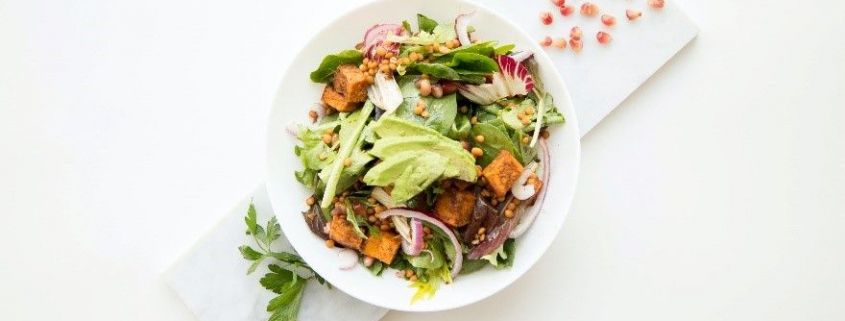The Healthy World of Salads

Salad is a dish made up of a mixture of small pieces of food, usually vegetables or fruit. However, various salad varieties can contain virtually any type of ready-to – eat food. Salads are usually served at room temperature or chilled, with notable exceptions, such as South German potato salad, which can be served warm.
Green salad
- A green salad or garden salad is most often composed of leafy vegetables such as lettuce varieties, spinach, or rocket (arugula). If non-greens make up a large portion of the salad it may instead be called a vegetable salad.
Wedge salad
- A wedge salad is a specific type of green salad made from a head of lettuce (often iceberg), halved or quartered, with other ingredients on top.
Fruit salad
- Fruit salads are made of fruit (in the culinary sense), which may be fresh or canned. Examples include fruit cocktail.
Rice and pasta salad
- Rice and pasta may be used as the key ingredient to making a salad. Pasta salads are more common. Some examples of rice salads come from Thai cuisine, like Nasi ulam.
Bound salad
- Bound salads are made with heavy sauces such as mayonnaise. One part of the bound salad should retain its form as it is put on a scoop tray. Examples of bound salads include tuna salad, chicken salad, egg salad, coleslaw and potato salad.
Dinner salad
- Main course salads (known as dining salads or as starter salads in the United States) can include small pieces of chicken, fish or steak. Caesar salad, Chef’s salad, Cobb’s salad, Chinese chicken salad and Michigan’s salad are dinner salads.
Dessert salad
- Dessert salads seldom include leafy greens and are always short. Common variants are made with gelatin or whipped cream, e.g. jello salad, pistachio salad and ambrosia. Certain types of dessert salads include snickers, glorified rice and cookie salads.




